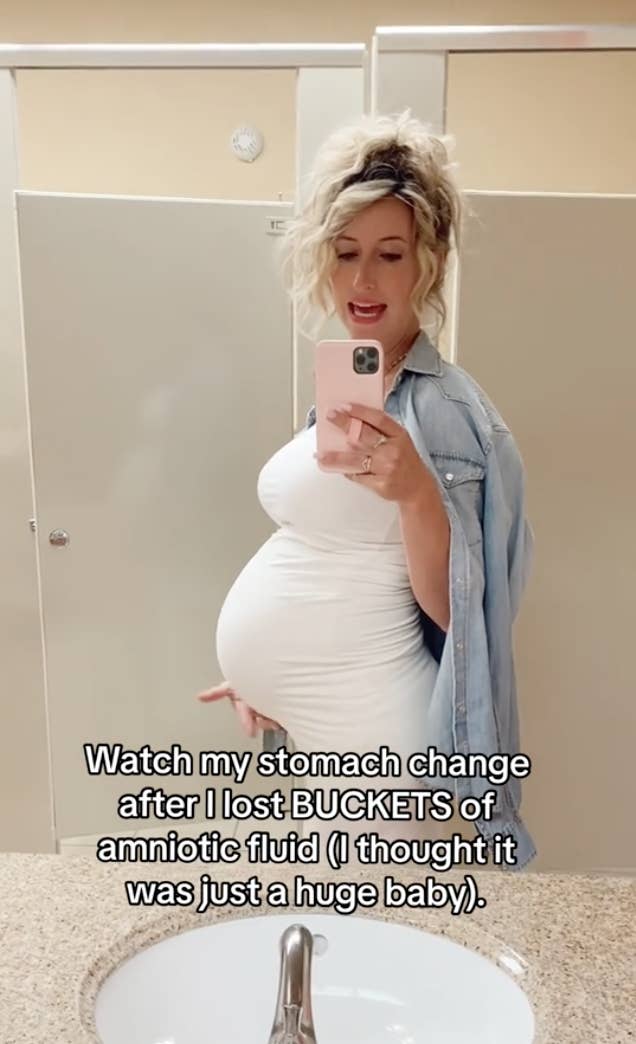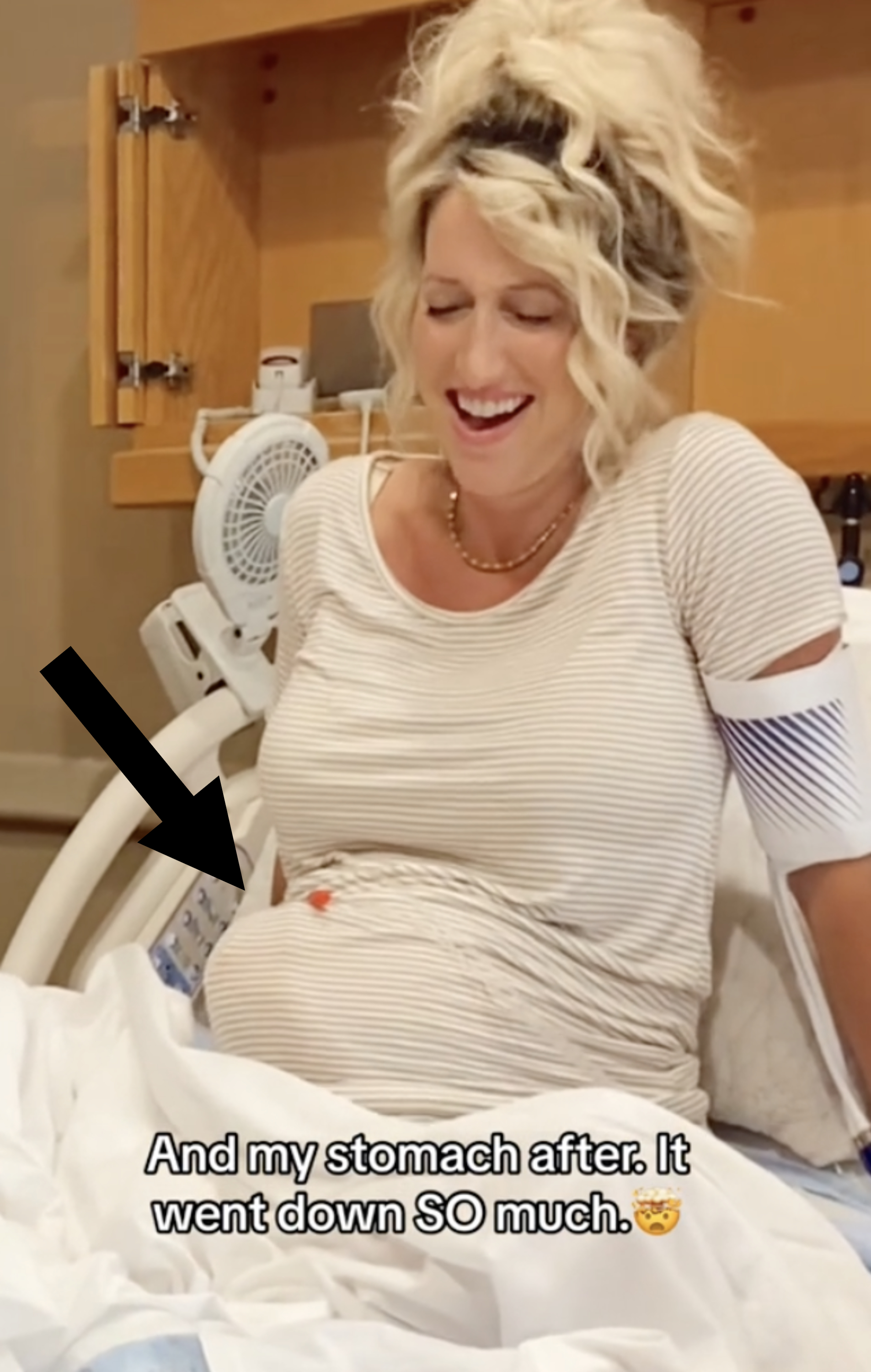At the beginning of her TikTok — which has nearly 22 million views — Emily shares a video of herself before giving birth where she just thought her baby was sitting really high:

She then shows herself in the hospital...

...and then on the toilet where you can hear liquid (for lack of a better explanation) flooding out of her into the toilet.

She ends her TikTok with a video of her looking very relieved after her delivery.

BuzzFeed spoke to Emily who said she learned at her 20-week ultrasound that she had a lot of amniotic fluid, but it was still considered within "normal range" since the amount varies significantly from person to person. "At 33 weeks, I did think I was having a very big baby because I was the same size then as I was when I was full-term with both my girls. It wasn’t until my water broke at the hospital and I saw my belly shrink that I realized just how much amniotic fluid I actually had," she said.

Emily said her pregnancy was super uncomfortable. "From about 16 weeks pregnant and on, I told my husband repeatedly that I could hardly breathe and that it was so different than my prior two pregnancies. I felt like my stomach was compressing my lungs. After my water broke, I felt like I could take a full breath for the first time in months. It was INSTANT, the relief!"

This was Emily's first boy pregnancy, and he is healthy! "I had normal fluid with my girls, but with him, I had excessive amounts. He weighed seven pounds and eight ounces, which was smaller than my second child. I assumed he was going to be much bigger, but it was just amniotic fluid."

To learn more about amniotic fluid during pregnancy, BuzzFeed spoke to board-certified OBGYN Dr. Fatima Daoud Yilmaz MD, FACOG who has been practicing for seven years.
She explained that amniotic fluid is the fluid that surrounds a baby while they are inside the uterus. "After 20 weeks gestation, it is primarily composed of your baby’s urine, which your baby is constantly swallowing and voiding in a cycle. The amniotic fluid serves a variety of important functions including acting as a cushion to protect the baby from trauma to the maternal abdomen as well as protect the umbilical cord from compression. It has antibacterial properties that provide some protection from infection, it serves as a reservoir of fluid and nutrients for the baby, and it contains several hormones and proteins that permit normal development of the baby’s lungs, muscles, and gastrointestinal tract."
Some people — like Emily — can have what is considered "a lot" of amniotic fluid but continue with a healthy pregnancy because of the wide range of what is considered typical. However, when excess amniotic fluid becomes a cause for concern, it is called polyhydramnios. Symptoms of having too much fluid include leakage of fluid from the vagina, breathlessness when laying flat, heartburn, constipation, and swollen ankles or feet.

On the other hand, symptoms of oligohydramnios (or too little fluid) are having a smaller-than-average uterus for how far along the person is gestationally and/or if they are leaking fluid. And, just because someone has symptoms of polyhydramnios or oligohydramnios, it does not always mean the person has the condition. Always consult your doctor.

